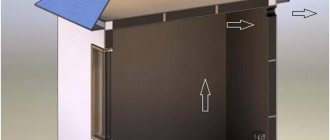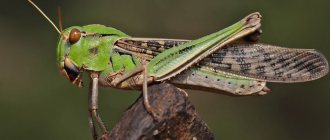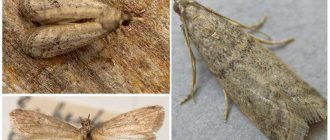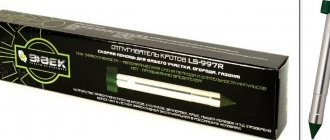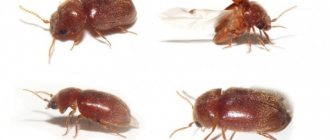Traditional methods
The undoubted advantage of old grandmother's methods is that they are harmless to the health of people and pets. You can almost always find something in the household that repels the pest and prevents it from multiplying in the apartment. Even if the required ingredient is not available, purchasing it will not cause significant damage to the family budget.
Many people have heard about orange peels, laundry soap, all kinds of essential oils and vinegar. These and other means have been tested by time.
An interesting detail: the moth was able to adapt to the action of naphthalene and practically does not react to its smell. Folk (traditional) methods and means have not lost their effectiveness.
There are two types of moths living in our apartments. You need to select herbs based on where they will be used - in the kitchen or in the wardrobe.
All plants that have a pungent odor can be divided into two groups. Some can be adjacent to food, while others cannot.
Many herbs have both medicinal properties and the ability to repel insects. They can be safely used to combat moths that have settled in the kitchen. Plants cope with this task no worse than chemical industry products.
Kinds
Several main types of moths can live in apartments, namely: clothing moths, furniture moths, and food moths. Each species is characterized by certain external signs and feeding habits. The wool or furniture moth is particularly large in size, often up to two centimeters, and golden in color. Insect larvae feed on wool and fluff.
The clothing or clothes moth prefers various products made from natural fabric; they constitute the main diet of its larvae. Clothes are smaller in size than furniture and have a faded color. Throughout her life, the female lays about one hundred eggs. Clothes moth eggs can be found in the folds of clothing and furniture. The development of the larva to the adult state can last from several months to one and a half years.
Tansy
This is the most famous folk remedy for all types of moths. Its specific smell forces the pest to leave its shelter. But since the plant is poisonous, it is not recommended to use it to get rid of food moths.
The flowers are especially toxic. In large quantities they are dangerous even for cattle. In small doses, tansy is used as a medicine for many diseases. Grass grows almost everywhere. Helps get rid of not only moths, but also other household pests.
Tansy reaches its greatest effectiveness during the flowering period. Plants must be dried before being placed in the closet. It is better to do this under a canopy in the fresh air.
For ease of use, flowers are made into unique bouquets. Collect 3-4 branches and tie them tightly into a broom. Hang in dressing rooms, closets and on mezzanines.
To prevent the grass from crumbling, it is placed in gauze bags. The packaging in which shoes are sold is perfect for this purpose, so there is no need to throw it away.
It is not recommended to place too many tansy in one closet. Its smell can provoke a negative reaction from the human respiratory system. Moths, unlike humans, sense even a faint aroma and strive to leave this place as soon as possible.
Dry grass should be renewed periodically. If the moth has already bred and hatched many larvae, tansy is used as an additional remedy. Measures to get rid of the pest must be carried out comprehensively.
Features of using folk remedies for moths in an apartment
All known methods of getting rid of pests differ depending on what type of moth you have to fight: clothes moths or kitchen moths.
But they all have the same quality: they simply repel insects without destroying them . The only drawback of all these methods is their slow action.
Next, we’ll tell you in more detail about how to get rid of moths in an apartment using folk remedies?
Artemisia grass
Moths do not like the bitter smell just like the aroma of tansy. If you smell the plant, you will feel a peculiar taste in your mouth. In large quantities, wormwood can cause reactions such as dizziness and severe headaches.
To successfully fight moths in an apartment, it is enough to place several sprigs of dried wormwood in the closet. They will not cause any harm to health, but will drive away insects.
Under the influence of the aroma of grass, butterflies lose orientation in space and cannot lay eggs. Wormwood is used as a preventative and control measure. It is better not to use it in the kitchen against food moths.
Wormwood essential oil has the greatest effect. It drives moths out of the closet. Its vapors kill bacteria that are harmful to health.
It is useful to keep pads soaked in wormwood oil in a drawer or bag with socks. This will protect them from moths and help eliminate the problem of unpleasant foot odor.
How to get rid of moth larvae
If traces of moths are found in the apartment, measures must be taken immediately. To solve the problem, a set of measures will be required:
inspection of things, food supplies; cleaning insect-infested items; food sorting; treating objects and surfaces with preparations to combat moths.
To destroy and repel them, they use folk and chemical remedies for moths in the apartment.
Inspection and cleaning
A thorough inspection of the apartment will require all places where moths could appear:
pantries with food supplies, kitchen cabinets, balconies, loggias, if food is stored on them; bags of cereals, flour, sugar are opened and the contents are checked, the packaging is carefully inspected; cabinets, including those where spare sets of bed linen and towels are stored; fur, wool, and felt products require especially careful inspection; bases of carpets, rugs, furniture upholstery (look for visible damage, holes of unknown origin).
Note! All spoiled food products are thrown away and should not be eaten. Items heavily damaged by moth larvae should also be disposed of. If a wardrobe item can be saved, it is subjected to thorough cleaning or chemical treatment with preparations - “anti-moles”. Treatment with agents that kill moth larvae and repel adult moths is carried out immediately during inspection and cleaning of the premises.
Traditional methods
Folk methods of fighting insidious insects include:
heat and cold treatment; the use of “non-chemical” products (for example, herbs, essential oils) to destroy moth larvae and repel their adults.
Heat treatment of clothing on which traces of an insect have been noticed is carried out as follows:
Wash at a temperature of at least 60 degrees with ordinary detergents. Drying the item for a long time in the hot sun (if possible). Boiling. Long-term treatment with hot steam using a household steam cleaner.
Moth larvae will also die from prolonged cold. The clothes are carefully packed in a sealed bag and placed in the freezer (or on a balcony or loggia with sub-zero temperatures). After 1-2 days the treatment is completed.
To treat the insides of cabinets and pantries, use a vinegar solution. To prepare it, 1 tbsp. food vinegar is diluted in 0.5-1 liters of water. Using a rag (sponge), the solution is used to wash all surfaces of the “dangerous zones” - shelves, doors, walls. Using a spray bottle, the solution is sprayed into all visible cracks and crevices (insect larvae or eggs may be hiding there).
Herbs and essential oils are widely used, the smell of which repels moths. To do this, dry herbs are sewn into gauze or fabric bags, which are generously laid out on the shelves of closets, in piles of clothes, linen, and placed inside bags and resealable covers with clothes.
Popular herbs:
wormwood, lavender, tansy; mint.
Some housewives make entire wreaths of dried herbs and hang them inside cabinets and pantries. Another effective folk remedy is “anti-mol” – dry orange peels. Among essential oils, tea tree or pine oils will repel insects.
Find out how to properly wash a down pillow in an automatic washing machine from this article.
On the page https://combat-dez.ru/poryadok-v-dome.com/tehnika/parogenerator.html, read useful tips on which steam generator is best to choose for cleaning your home.
Chemicals
The following chemicals are used to kill moths:
Aerosol products for combating household insects, which are sprayed onto objects and surfaces of cabinets, shelves, trying to splash all the cracks and secluded places. Aerosols are toxic substances; they instantly kill adults, larvae and eggs. Naphthalene is a solid substance with a characteristic pungent odor, sold in tablets. The smell of mothballs effectively repels moths, but is strongly “absorbed” into things (especially during long-term storage).
If you have doubts whether measures to destroy insect larvae in affected clothing or furnishings have been successful, you can only use the services of professional dry cleaning.
Lavender
The subtle smell found in the aromas of many cosmetics and perfumes is very unpleasant to moths. This feature of the plant is used in the development and manufacture of industrial products. Buy lavender-based essential oil at the pharmacy, soak napkins in it and place it on the shelves with your laundry.
In a closet with outerwear, “lavender” scraps are tied in a knot on a crossbar or placed in the pockets of fur coats and sheepskin coats. The good thing about this method is that the clothes removed from the wardrobe do not emit a chemical aroma, but smell quite pleasant.
Applications of lavender flowers:
- Dry plants are laid out in the depths of the shelves (3-4 branches are enough for each).
- As the aroma wears off, the flowers change.
- The supply should be kept in a tightly closed container. It is better if it is glassware.
When sending warm blankets for summer storage, dry them in the sun and put them in bags with lavender sprigs. In sealed packaging, the aroma lasts much longer than on cabinet shelves, so dried flowers do not need to be changed.
Vinegar and garlic
Vinegar and garlic do not have a very pleasant smell. Although it is precisely because of it that they are considered a good means of fighting insects. It is better to store garlic in the kitchen, inside cabinets or in pantries next to other food products, and it is recommended to add vinegar to the water when cleaning the floor in the apartment.
The butterfly does not tolerate spicy plants, including thyme, rosemary and cloves. They can be placed in bags, combined with each other, or used each separately. Such sets are distributed throughout the apartment and repel pests from the premises for a long period.
Mint
This herb is versatile. It is used not only in the wardrobe, but also in the kitchen. The smell is pleasant, it has a beneficial effect on the human nervous system and calms. For moths, the scent of mint is a signal to leave the apartment.
If you have a summer cottage, you can grow mint there. In the pharmacy it is sold already in dried form, although recently picked plants work better.
Mint grows well in indoor pots. You just need to get hold of rhizomes for planting. You can not only forget about moths, but also drink aromatic tea with fresh leaves.
If the butterfly has already laid eggs, then mint alone is unlikely to help. To combat larvae, you need to add tansy or wormwood to the bouquet.
It is useless to fight against food moths by laying out grass on shelves. First you need to get rid of contaminated products, clean the cabinets and only then place mint sprigs next to the cereals.
Since the larvae left the house along with the garbage, the eggs were washed off with a rag, all that remains is to get rid of the butterflies. The mint flavor will cope with this very quickly. In just a few days you will not see a single moth flying around the kitchen.
Who eats our clothes
The clothes moth (also known as the house moth) is a small butterfly with golden wings with fringed edges.
However, she is not the main enemy of our things. Irreparable damage to the wardrobe is caused by its larva - a transparent white caterpillar up to 1 cm long. The caterpillar is very lazy, inactive, but when it needs to find food for itself, it begins to move. When you see a moth flying around the house, you don’t even have to run after it, trying to swat it. The fact is that only males or females who have already laid eggs fly. They will no longer bring you harm, and they will soon die themselves. You need to hunt for their eggs and larvae.
The easiest way is through an open window or door. However, clothes moths are also capable of entering a home through a narrow gap. The flying butterfly finds suitable conditions for reproduction and food and lays eggs there.
If you brought an antique or simply used sofa from somewhere, it is quite possible that there were already eggs or moth larvae in its upholstery. The same goes for used clothes.
Clothes moth larvae can come to us, although rarely, through the fur of domestic animals.
Other herbs
All folk (natural) remedies for moths are based on the use of odors that this insect is afraid of.
Can be used:
- sweet clover;
- chestnuts (leaves and fruits);
- yarrow;
- sage.
Some housewives make bouquets of them.
For this:
- Take a tansy branch and put wormwood on it.
- Then sweet clover, and even lower - sage.
- The bouquet is tied with an elastic band and the excess is cut off.
- Already in this form, the broom can be hung in the closet. There it will dry.
Dense wreaths are woven from fresh flowers and grass that protects against moths and dried in this form.
Orange peels
Orange peels, as well as lemon and tangerine peels, are an old folk method of getting rid of moths. Their strong odor frightens adult butterflies .
Where the crusts are laid out: in cabinets or nightstands, they do not lay eggs. This is good for preventive purposes or to repel insects.
Rules of application:
- Place fresh citrus fruit peels near food products.
- Peels that dry out and lose their flavor must be replaced promptly.
Newspapers
Moths cannot stand the smell of printing ink. Our grandmothers covered the shelves of cupboards and wardrobes with newspapers. To protect your favorite fur coat from damage, you can remember the old folk method and put several crumpled newspapers in a case with outerwear.
To achieve the greatest effect, the press must be fresh. When storing winter boots in your closet, stuff your boots and boots tightly with crumpled up newspaper. In this way, two problems are solved: the shoes retain their shape, and moths will never appear in them.
Essential oils
Essential liquids are an excellent and very effective folk remedy for repelling pests.
fir, eucalyptus, rosemary oil, as well as patchouli, lemongrass and citronella oil are actively used .
Mode of application:
- Rinse the floor with water, after adding a few drops of essential liquid;
- Wipe the shelves and surfaces where moths may accumulate with oil;
- Lay out the swabs soaked in liquid;
- Spray cabinets and rooms;
- Place open bottles of anti-pest oils in wardrobes, kitchen cabinets and bedside tables.
Features of life
It is widely believed that clothing, furniture upholstery and interior items made of fabric and fur are damaged by moths. However, the butterflies themselves are quite harmless; they only perform the functions of settlement, reproduction and finding food for the larvae. Damage is caused only by clothing moth caterpillars that have gnawing type mouthparts.
Moth larvae feed on the protein keratin, which is found in large quantities in wool and fur products, and the remains of organic substances of animal origin, using it as an energy source. However, under certain conditions, caterpillars can damage not only keratin-containing materials, but also, for example, skin.
In search of food, larvae can move long distances, gnawing at cotton and linen fabrics, synthetic materials, cardboard, paper, but cannot develop on them. Caterpillars often damage fabrics made from a mixture of wool and synthetics, and eat them more intensively than pure wool, due to the fact that synthetic thread is not absorbed by them.
The female purposefully lays eggs one or several at a time in places where her offspring can find a source of food. These are, as a rule, wardrobes, mezzanines, cavities of folding sofas and other dark places with “food” reserves. Pregnant females lay from 60 to 100 eggs, and up to four generations of moths develop in a year.
It is important to consider that these insects breed all year round, so moths can appear in a closet with clothes regardless of the season. The average lifespan of an adult female is two weeks. Unfertilized female moths live up to a month
Moths often enter an apartment by flying through open windows, vents and doors from bird nests located under the roof in the attic or on neighboring trees.
What else is a moth afraid of?
In the housewife's attempts to find what the moth is afraid of (folk remedies), she may find the following recommendations for use:
- indoor plants with a strong odor;
- spicy medicinal plants;
- some fruits;
- essential oils;
- synthetic drugs in the form of suspended elements.
When fighting flying pests in an apartment, you should remember that it is not the butterfly that spoils food and things, but its larvae, deposited in secluded places deprived of access to fresh air. You will have to get rid of them yourself or using chemicals.
A variety of folk remedies only repel such insects. If there are already too many of them, you may need to resort to chemical insecticides. The larvae die from them and this guarantees complete disposal of the pest once and for all.

